There are a number of different manipulation techniques that are applied to crop plants.
In this section, different manipulation techniques relevant to different crops and crop growth stages are investigated.
Crop plants can be roughly divided into three main groups with regard to manipulation.
Fruit-bearing vegetable crops: Crops require a wide range of manipulation.
Leafy vegetable crops: Require limited or no manipulation. Manipulation is normally limited to the removal of mature leaves that may be ready for harvest or are diseased
Tree crops: Require primarily training, pruning and in some cases chemical manipulation of fruit.
Plant Manipulation in Fruit Bearing Vegetable Crops
Suckering and Trimming
- A sucker is a small shoot, which forms between the petiole and the stem on crops such as tomatoes. Suckers drain plant nutrients, which would normally be channelled into fruit production. Suckers are removed when they reach approximately 2 to 5 cm in length.
- The suckers are removed by simply snapping them off between the thumb and index finger. Alternatively, they can be removed using a knife, but this poses the potential of spreading disease.
- Trimming of side-shoots is done regularly using a knife or shears. Always disinfect after each plant has been trimmed. If the growth tip is damaged the side shoots will grow profusely, one of the side shoots can then be selected as a new leading shoot
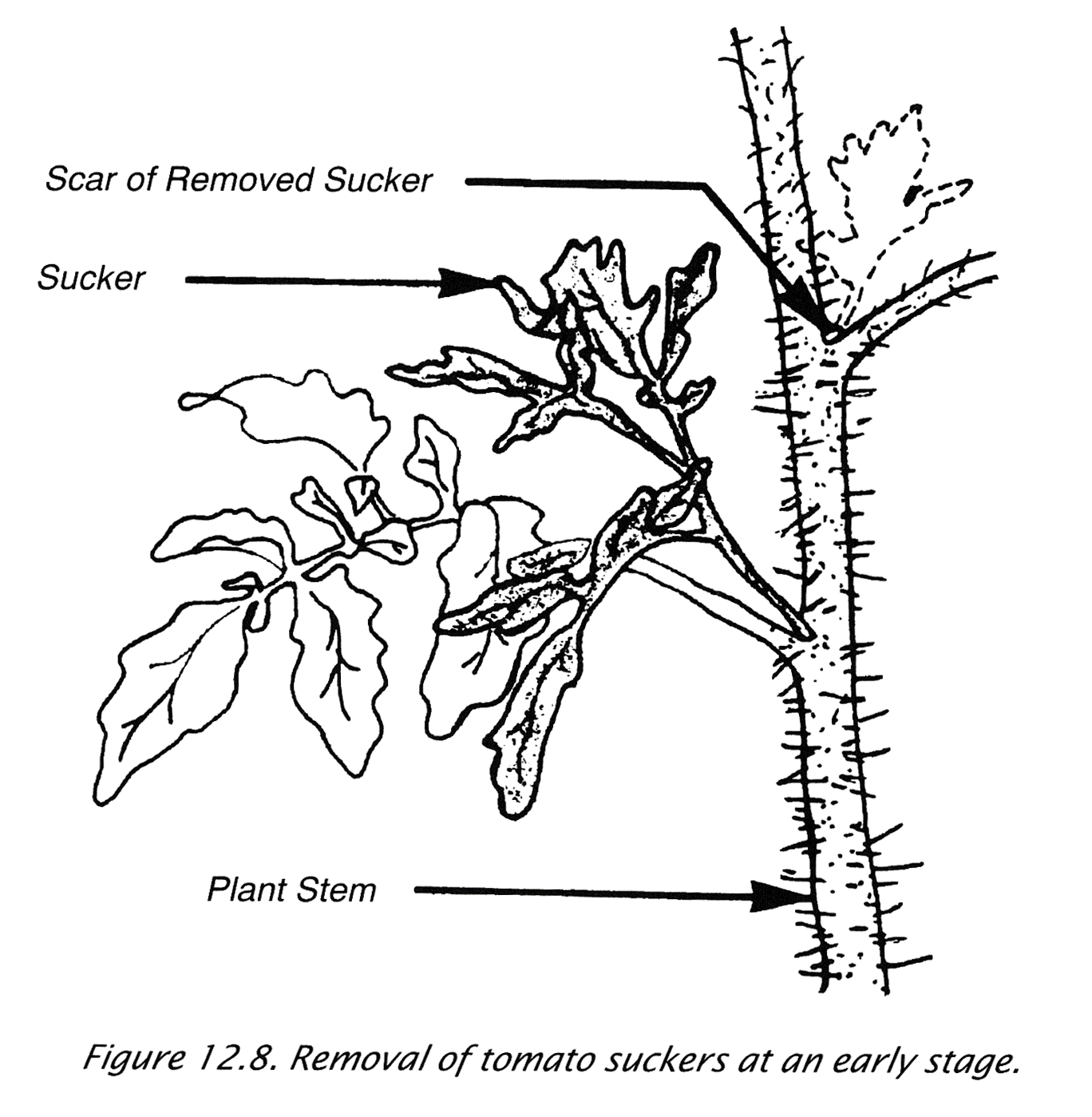
Removal of Leaves
During growth, the older, mature leaves die. These leaves are susceptible to diseases and should be removed. Removal of older leaves also improves the ventilation around the bottom of the plant. The number of leaves removed depends on the grower and plant cultivated.
Fruit Manipulation
Fruit thinning is a process through which fruit that is malformed or has poor colour developed is removed. Fruit is removed in areas where diseased leaves have been removed to allow for sufficient leaf development.
Fruit ripening may be manipulated using specialised chemicals. A compound such as Ethephon can be used to induce even ripening in tree crops. Similarly, chemicals such as HCN are used to induce bud break in crops that require low temperatures for bud break.
Pollination
In most popular hydroponics crops pollination may be required. This is usually done by ventilation, insects or movement of workers through the glasshouse. By vibrating the stay wires on the trellising, the plants can be shaken, aiding pollination.
Trellising of Plants
Trellising is labour intensive and should be done taking care not to damage plants. It ensures that plants are kept upright and do not lie on the ground. Plants need to be manually twisted around the trellis system. Some trellises have removable supports which are removed to make the process easier.
Some plants are layered in order to keep the harvesting and handling height below 2.5m. Various trellising systems can be used on different species.
Creeping type plants require trellising. A trellis is a simple structure, which is used to support the plant. The simplest trellis is one in which wire is spun against a wall in a grid pattern. The plant is then threaded through the grid and allowed to grow.
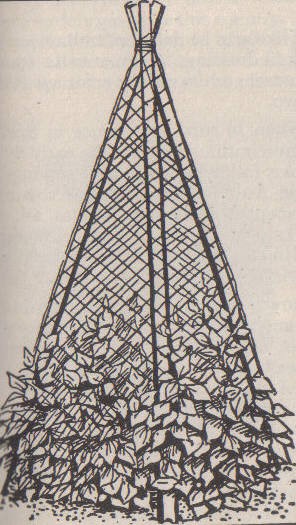
This kind of trellis can be made to fit any shape that may be required. The wooden poles are secured in the ground by digging a suitable hole and inserting them into the hole. The poles are then laid against one another and fastened using string or wire.
Trellises can be manufactured from wood, which is nailed or screwed together in a square, or diamond-shaped design.
The trellises are made in pre-determined width and height to suit their application.
A simple trellis is made by planting poles into the ground at pre-determined distances. A number of horizontal wires are now spun parallel to one another. The plant’s main shoots are merely draped over the wires. In some cases, they need to be fastened to the wires.
In hydroponics systems trellising could be as simple as a wire that is spun from the roof to the floor of the tunnel. The primary shoots of a tomato; pepper or cucumber is then simply wound around the wire.
It is important that the shoot is fastened to the trellis, that the plant is not damaged with the binding being used. The binding could be specialised plant tape or thin wire.
Example of trellises:
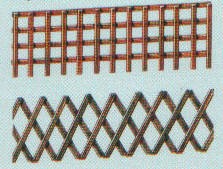
Plant Manipulation On Tree Crops
Pruning
Plants are pruned primarily to encourage the growth of new flower-bearing wood, to remove dead vegetation and to improve their appearance or to keep a tree at a manageable size, making harvesting more efficient. Pruning is only done on perennial shrubs and trees.
In a natural environment, pruning occurs through the action of wind, or through breakage due to excessive fruit loads, and animal browsing. Such natural pruning frequently leaves stubs or slowly healing wounds that are susceptible to decay and disease.
Pruning in orchards prevents decay in broken areas and promotes quick healing of wounds.
Pruning Tools
The major pruning tools that are used in tree crops are pruning shears and a specialised saw called a lopper. In some cases, specialised motorised saws can also be used. Depending on the size of the trees a chain saw can also be used. The principles of pruning as described below are the same independent of the tools used.
It is important that the tools used are always kept clean and free of plant residues. They should also be sharpened regularly. This will ensure that the pruning cut is always clean and accurate.
Rules for Pruning
The basic rules for pruning are:
- Remove all deadwood.
- Remove damaged wood such as scales or sun scalded wood or wood covered in lesions.
- Remove branches that cross the centre of the plant, or those that rub against other branches.
- Remove suckers completely.
- Remove branches that make the bush look lopsided.
- Remove an old cane for each new cane that develops. This will renew the plant.
- The cane should be cut back to the outside but eye about the fourth bud eye or so from the base.
- The cuts should be clean and at a 45-degree angle to the stem. Ensure the pruning shears are sharp and clean before use.
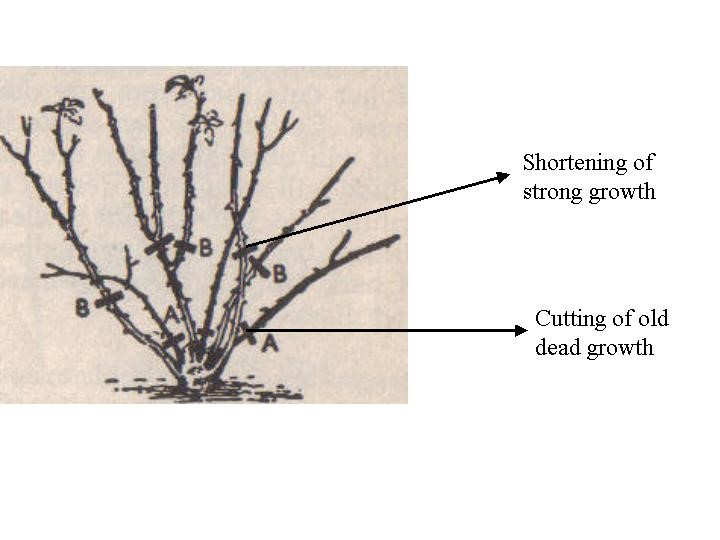
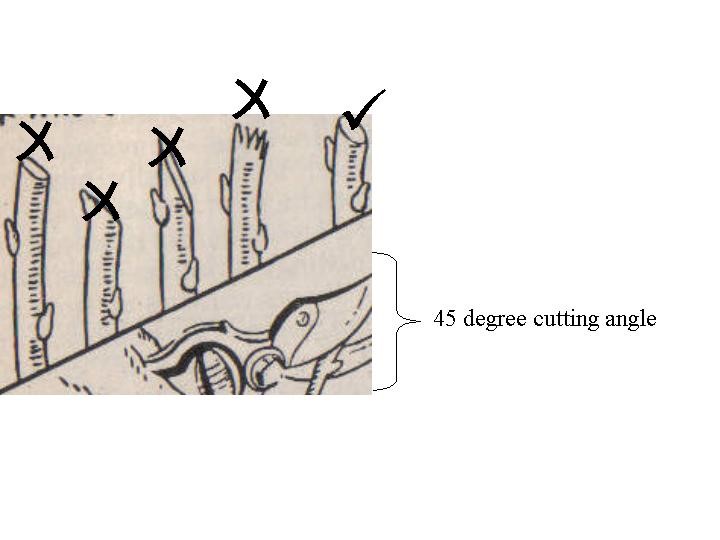
Pruning is mostly done during the dormant period (winter) although summer pruning can also be done.
Training and Trellising
Training and trellising systems are not only used in vegetable crops, but also in some fruit tree crops. During the initial stages of plant development, the farmer is mainly concerned with the training of the tree. The aim is to develop a framework for the future that can carry heavy crops of good quality fruit.
